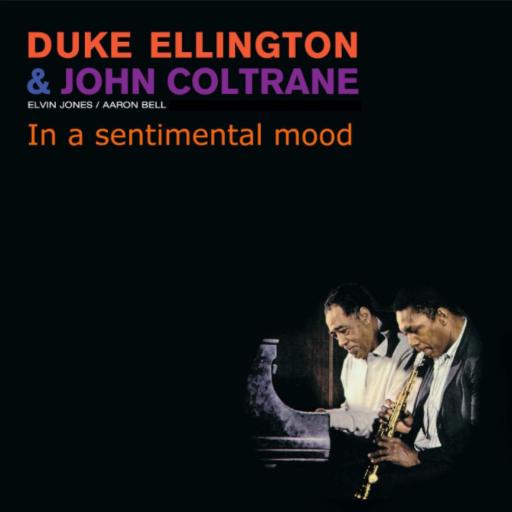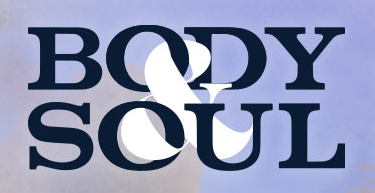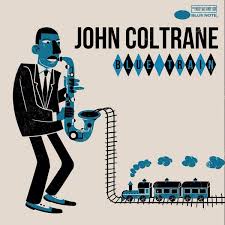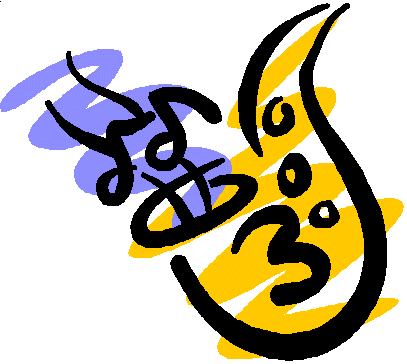John Coltrane – Sonny Rollins – Pharoah Sanders – Archie Shepp – Joe Lovano
John Coltrane & Johnny Hartman ↓ ‘My Only Love’ ⇐(G Wood & R Mellin)
The very thought of you makes my heart sing
Like an April breeze on the wings of spring
And you appear in all your splendor
My one and only love
The shadow’s fall and spreads their mystique charms
In the hush of night while you’re in my arms
I feel your lips, so warm and tender
My one and only love
The touch of your hand is like heaven
A heaven that I’ve never known
The blush on your cheek whenever I speak
Tells me that you in are my own
You fill my eager heart with such desire
Every kiss you give sets my soul on fire
I give myself in sweet surrender,
My one and only love . . .
◊ Bio ↓ Giant Steps
•→ ‘On Green Dolphin Street’ ← [Germany _ 1960]
•→ John Coltrane Quartet + Eric Dolphy: ‘Impressions’ . . . ← [1961]
•→ A Love Supreme _Part 1: Acknowledgement
∞ Ballad Medley ⇓ ‘Autumn Leaves’ / ‘What’s New’ / ‘Moonlight In Vermont’
John Coltrane – tenor sax (on «What’s New«); Stan Getz – tenor sax (on «Moonlight In Vermont»); Wynton Kelly – piano (on «Autumn Leaves»); Paul Chambers – bass, Jimmy Cobb – drums
•→ The World According to John Coltrane ⇐ [‘A Love Supreme’…]
÷ ÷ ÷ ÷ ÷ ÷
 ¤ SONNY ROLLINS
¤ SONNY ROLLINS
Saxophone Collossus
Rollins developed a bold and quirky melodic style, informed by the idiosyncrasies of two of the most prominent saxophonists at the time, Lester Young and Coleman Hawkins. In the mid 1950s, influenced heavily by the rapid technique of Charlie Parker, Rollins hit his stride as an artist. In 1956 he recorded two seminal albums: Saxophone Colossus, which features the calypso-inspired tune «St. Thomas,» and Tenor Madness, on whose title track, a driving blues, Rollins trades choruses with John Coltrane.
The following year, Rollins became the first saxophonist to record in a trio setting, with drums and bass but no piano or guitar. In 1957 he released both Way Out West and A Night at the Village Vanguard with a trio, and coined a sound that contemporary saxophonists such as Joshua Redman and Kenny Garrett have since fervently explored.
The Bridge
By the end of the 1950s however, Rollins was feeling pressured by promoters, and frustrated by his own playing. In 1959 he took a sabbatical from gigging and recording, and devoted his time to practicing on the Williamsburg Bridge in New York City. When he returned to the music business in 1963, he named his comeback album The Bridge.
Living Legend
Since the 1960s, Rollins has maintained a steady performance career, although one that is marked by soul searching and artistic reinvention. While seeking enlightenment through the study of yoga and Eastern philosophies, Rollins has turned to R&B and funk for inspiration, and began delving into completely improvised solo saxophone performances.
[from . . . http://jazz.about.com/od/classicjazzartists/p/SonnyRollins.htm]
◊ Sonny Speaks ⇓
‘What Jazz Is, and What Being a Jazz Musician Means To Me’♣ Sonny Rollins Trio ↓ ‘Weaver of Dreams’ [1959]
Φ Denmark 1965:
•→ ‘There’ll Never Be Another You’⇐
•→’St Thomas’⇐
♦ Live Jazz à Juan ↓ [2005]
÷ ÷ ÷ ÷ ÷ ÷
¤ Pharoah Sanders [1940-2022]
«Pharoah is a man of large spiritual reservoir, always trying to reach out to truth. He’s trying to allow his spiritual self to be his guide. He’s dealing, among other things, in energy, in integrity, in essences.» _ John Coltrane
Pharoah Sanders (his given name, Ferrell Sanders) was born into a musical family. Sanders’ early favorites included Harold Land, James Moody, Sonny Rollins, Charlie Parker, and John Coltrane. Known in the San Francisco Bay Area as «Little Rock,» Sanders soon began playing bebop, rhythm & blues, and free jazz with many of the region’s finest musicians, including fellow saxophonists Dewey Redman and Sonny Simmons, as well as pianist Ed Kelly and drummer Smiley Winters. In 1961, Sanders moved to New York, where he struggled. Unable to make a living with his music, Sanders took to pawning his horn, working non-musical jobs, and sometimes sleeping on the subway. During this period he played with a number of free jazz luminaries, including Sun Ra, Don Cherry, and Billy Higgins.
In 1964, Coltrane asked Sanders to sit in with his band. The following year, Sanders was playing regularly with the Coltrane group. Coltrane’s ensembles with Sanders were some of the most controversial in the history of jazz. Their music represents a near total desertion of traditional jazz concepts, like swing and functional harmony, in favor of a teeming, irregularly structured, organic mixture of sound for sound’s sake. Strength was a necessity in that band, and as Coltrane realized, Sanders had it in abundance.
Sanders made his first record as a leader in 1964 for the ESP label. After John Coltrane‘s death in 1967, Sanders worked briefly with his widow, Alice Coltrane. From the late ’60s, he worked primarily as a leader of his own ensembles. From 1966-1971, Sanders released several albums on Impulse, including Tauhid (1966), Karma (1969), Black Unity (1971), and Thembi (1971). In the mid-’70s, Sanders recorded his most commercial effort, Love Will Find a Way (Arista, 1977); it turned out to be a brief detour. From the late ’70s until 1987, he recorded for the small independent label Theresa. From 1987, Sanders recorded for the Evidence and Timeless labels. The former bought Theresa records in 1991 and subsequently re-released Sanders’ output for that company. In 1995, Sanders made his first major-label album in many years, Message From Home (produced by Bill Laswell for Verve). The two followed that one up in 1999 with Save Our Children. In 2000, Sanders released Spirits — a multi-ethnic live suite with Hamid Drake and Adam Rudolph. In the decades after his first recordings with Coltrane, Sanders developed into a more well-rounded artist, capable of playing convincingly in a variety of contexts, from free to mainstream.
♦ Pharoah Sanders Quartet ↓ ‘Wonderful,Wonderful’ [Poland. 1998]
Pharoah Sanders (Tenor Sax) + William Henderson III (Piano, Keyboards, Talking Drums) + Santi De Briano (Bass) + Winard Harper (Drums)
♦ ‘Dorita’ ↓ [Germany, 2004]
P. S. (tenor sax, vocals) + Matthew Garrison (bass) + Orrin Evans (piano) + Will Calhoun (drums)
•→ Nozipho ← [pics]
•→ Pharoah Sanders Quartet [Heineken Jazzaldia 2013]
01 – ‘The Night Has A Thousand Eyes’ / 02 – ‘Naima’ ⇑
03 – ‘Giant Steps’ / 04 – ‘The Creator Has A Masterplan’←
♣ Pharoah Sanders + Zakir Hussein + Trilok Gurtu:
‘Hum Allah Hum Allah Hum Allah’ ↓ [Jewels of Love_1969]
Peace is a united effort for co-ordinated control
Peace is the will of the people and the will of the land
With peace we can move ahead together
We want you to join us this evening in this universal prayer
This universal prayer for peace for every man
All you got to do is clap your hands
One two three – One two three · · ·
Hum-Allah, hey … Hum-Allah, hey … Hum-Allah, hey … Hum-Allah
Prince of peace won’t you hear our pleas and ring your bells of peace
Let loving never cease . . .
Hum-Allah, hey … Hum-Allah, yeah … Hum-Allah, hey …Hum-Allah
•→ Bill Laswell Axiom Sound System w/ Pharoah Sanders ←
÷ ÷ ÷ ÷ ÷ ÷
¤ Archie Shepp ↓
Archie Shepp is a jazz saxophonist best known for his Afrocentric music of the late 1960s, a unique style of free-form avant-garde jazz blended with African rhythms, and for his collaborations with John Coltrane, Horace Parlan, Cecil Taylor, and the New York Contemporary Five ensemble. His long career as an educator has focused on ethnomusicology, looking at the history of African-American music from its origins in Africa to today.
A. Shepp : tenor sax + Wayne Dockery: bass + Bobby Durham: drums + Massimo Farao: piano ⇓ [Live In Venice _ 2002]
♦ Gnawa Fire Music ↓ [2011]
♦ Burning Bright ↓ [2010]
÷ ÷ ÷ ÷ ÷ ÷
¤ Joe Lovano
Active during a period of jazz history when it seemed radical innovation was a thing of the past, Joe Lovano nevertheless coalesced various stylistic elements from disparate eras into a personal and forward-seeking style. While not an innovator in a macro sense, Lovano has unquestionably charted his own path. His playing contains not an ounce of glibness, but possesses in abundance the sense of spontaneity that has always characterized the music’s finest improvisers.
∞ Joe Lovano & Hank Jones ↓
. . . jazz baltica ↓ [Germany_2008]
00:00 – Lady Luck
08:12 – Ornithology
14:14 – interview
23:05 – Kids Are Pretty People
28:21 – Polka Dots and Moonbeans
32:13 – In a Sentimental Mood
36:43 – Oh! Look At Me Now!
40:28 – Six and Four
45:40 – end credits
· · · ‘Monk’s Mood’ ↓ [Bimhuis Amsterdam]
♣ with McCoy Tyner Trio ↓ ‘Blues on the corner’ [2012]
McCoy Tyner (piano) + Joe Lovano (saxophone) + Gerald Cannon (bass) + Francisco Mela (drums)
∞ with Jim Hall ⇒ ‘Blackwell’s Message’ ⇐ [1996] ⇒‘The Dawn Of Time’ ⇐
♦ ‘Viva Caruso’ ↓ [Jazzwoche Burghausen 2011]
Joe Lovano’s Us Five featuring drummers Otis Brown III & Francisco Mela
•→ Joe Lovano In The Studio w/ Esperanza Spalding⇐ / •→ On the road with JL⇐








Deja un comentario